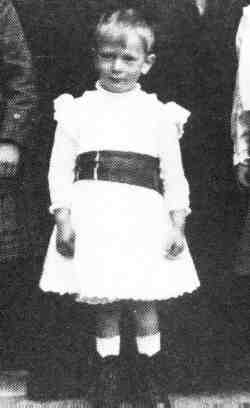
Figure 1.--This boy's white dress contrast with the brightly colored plaid of his sash. |

|
Boys wore waist sashes with several clothing styles. The sash was a fancy accessories with miltary origins. Boys woyld have only worn them wwhen dressing up for formal occassions. The most common were, of course, Fauntleroy suits, but they appeared earlier and were also worn with dresses and kilt suits, as well as other clothes. A colored sash was a popular feature to set off a white dress or a black velvet Fauntleroy suit. Colored sashes could also set off white dresses.
Sashes were sometimes worn with the dresses worn by girls and little boys throughout the 19th century and even the early part of the 20th century. They were an important design element of many dresses, especially the more formal party frocks. The sashes varied in color, material, size, style, and how it was tied. The color of the sashes may have indicated the gender of the child. Some authors, however, insist that modern gender color conventions had not yet developed. Boys as well as girls, for example, both might wear blue sashes. Some dresses for boys were more plain than those designed for girls. Thus a sash was often a important design element adding a bit of color or embellishment to the drees. Some sashes might contrast with the color of the dress such as a plaid or colored sash on a white dress or a white sash on a colored dress. Other sashes might be the same color as the dress. I'm unsure as to what extent colored sashes were worn with colored dresses and what specific colors were the most popular during different periods. There were a range of other pertinent characteristics, including material, sizes, dtyles, and tieing.
Fancy velvet suits did not begin with the Little Lord Fauntleroy suit in the 1880s. We see see fancy velvet suiys well before Mrs Burnett inspired the Fauntleroy suit. In fact it was the suits she saw in France that inspired her creation. But such suits were not just popular in France. We note two unidentified German brothers wearing identical velvet suits in 1864. We only see the oldervboy wearing a sash, but the younger boy may have had one as well.
Sashes for boys are generally associated with the Cavelier costumes of the 17th century. I don't have any specific details on the sashes worn during this era, but would appreciate any infomation readers may have. The work of Van Dyck and other artists appear to have been the primary inspiration, but the clothes depicted were those of adult men--not children.
Sashes were revived in the late 19th century. In the mid-1880s, they were incorporated in the fancier Little Lord Fauntleroy velvet suits. The suits were generally black or dark colors (blues, greens, or burgandies). The sash could thus be the one bright spash of color in an otherwise colorless outfit. The colors varies, but were sometimes a bright red with black suits. The colored suits might have bright shades of the color involved. I do not know of white sashes worn with the dark-colored velvet suits to any extent before the turn of the century. The sash actually was the most masculine part of the Fauntleroy suit. It was worn differently than the sashes on dresses. In fact, it was worn rather like the sashes worn on some dress military uniforms. The sash with a Fauntleroy suit was worn at various lengths. One common length was down to just above the knee and hem of the kneepants. There were some differences as to the chronolgical period and type of Fauntleroy suit.
|
Sashes were also worn with Fauuntleroy kilts and kilt suits. This was not as common as with
dresses and Fauntleroy suits, but they were occasiinally part of kilt suit outfits. Most commonly the sash was used for the Fauntleroy kilts that were worn with open jackets without collars to display the boys lacey blouse to best effect. Kilt suits generally had jackets with collars that were worn buttoned. The sashes involved were often not the fancy silk and satin sashes, but might be fashioned out of the same material as the suit. This was especially the case when the jacket was of the same material as the
kilt skirt, rather than velvet. These plain sashes made out of the same material as the skirt was a
departure from many of the sashes discussed on this page because they were not worn in contrast to the boys's outfit. This was probably because many kiltsuits were probably not a boy's best dress party suit, but rather often worn for less dressy occasions. The sashes worn with kiltsuits were often
quite long sashes because the kilt suits were generally worn at lengths well below the knees, down to below the boy's calfs. This was longer than the hem of the kneepants worn with Fauntleroy suits, which was generally the limit of the length of the sash.
We have also noted sashes being worn with page boy outfits at formal weddings. This included several different styles of outfits.
We notice altar boys sometimes wearing sashes. This seems to be when they were dressing for particularly formal occassions. One example is two unidentified New York boys in the 1890s.
Navigate the Historic Boys' Clothing Web Site:
[Return to the Main sash page]
[Introduction]
[Activities]
[Biographies]
[Chronology]
[Cloth and textiles]
[Clothing styles]
[Countries]
[Topics]
[Bibliographies]
[Contributions]
[FAQs]
[Glossaries]
[Images]
[Links]
[Registration]
[Tools]
[Boys' Clothing Home]
